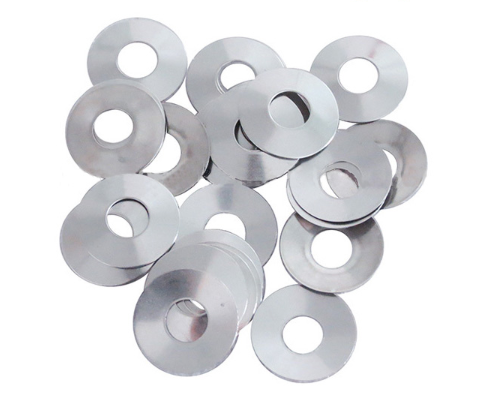Coin Cell Springs: Essential Components for Reliable Battery Performance
Coin cell batteries are ubiquitous in modern life, powering everything from watches and calculators to medical devices and remote controls. However, the reliability and efficiency of these batteries depend not just on the battery itself, but also on the components that hold and connect them within a device. One such critical component is the Coin Cell Parts. In this blog, we will explore what coin cell springs are, their key functions, and why they are essential for ensuring consistent and reliable battery performance.
●What is a Coin Cell Spring?
A coin cell spring is a small, metallic spring designed to maintain contact between a coin cell battery and the electrical terminals of the device it powers. These springs are typically made from conductive materials like stainless steel or phosphor bronze, which ensures good electrical conductivity and corrosion resistance. The spring is usually housed in the battery compartment of a device, pressing against the battery to hold it securely in place and ensure continuous electrical contact.
●Functions of a Coin Cell Spring
1.Maintaining Electrical Contact: The primary function of a coin cell spring is to maintain consistent electrical contact between the battery and the device's terminals. By exerting a small amount of pressure on the battery, the spring ensures that the battery remains in constant contact with the electrical circuit, preventing interruptions in power supply.
2.Absorbing Vibrations and Shocks: Devices that are subjected to movement, vibrations, or impacts (like remote controls or wearable devices) rely on the coin cell spring to absorb these forces. The spring's flexibility allows it to cushion the battery against shocks, preventing it from losing contact with the terminals during use.
3.Compensating for Size Variations: Coin cell batteries, even of the same type, can have slight variations in size due to manufacturing tolerances. The coin cell spring compensates for these differences, ensuring a snug fit and reliable contact regardless of the battery's exact dimensions.
4.Facilitating Easy Battery Replacement: Coin cell springs also play a role in the ease of battery replacement. The spring's pressure helps keep the battery in place but also allows for easy removal when the battery needs to be replaced. This is particularly important in devices where the battery needs to be changed frequently.
5.Enhancing Durability: By providing a stable and consistent connection, coin cell springs help extend the lifespan of both the battery and the device. A secure battery connection prevents issues such as intermittent power loss, which can lead to erratic device behavior or even damage to the electronic components.
●Types of Coin Cell Springs
Coin cell springs come in various designs, each suited to different applications:
1.Compression Springs: These are the most common type of coin cell springs. They are helical springs that compress when the battery is inserted, maintaining pressure against the battery to ensure continuous contact.
2.Wave Springs: Wave springs are flat and wavy in shape, providing a compact alternative to traditional compression springs. They are ideal for applications where space is limited but a consistent force is still required.
3.Leaf Springs: Leaf springs are flat, flexible strips of metal that press against the battery. They are often used in devices where a lower profile spring is necessary.
4.Custom Springs: Some applications require custom-designed springs to meet specific size, shape, or force requirements. These springs are tailored to the particular needs of the device and its battery compartment.
●Applications of Coin Cell Springs
Coin cell springs are used in a wide range of devices, each requiring reliable battery performance:
1.Watches and Clocks
In timekeeping devices, consistent power supply is critical to maintaining accurate time. Coin cell springs ensure that the battery remains in constant contact with the terminals, preventing interruptions that could affect the device's precision.
2.Medical Devices
Medical devices, such as glucose meters, hearing aids, and portable diagnostic tools, rely on coin cell batteries for power. Coin cell springs ensure these devices remain operational in all conditions, which is vital for patient health and safety.
3.Remote Controls
Remote controls for televisions, garage doors, and other electronic devices are subject to frequent handling and movement. Coin cell springs absorb the resulting vibrations and impacts, ensuring reliable performance.
4.Wearable Devices
Wearable devices, including fitness trackers and smartwatches, require compact and reliable battery connections. Coin cell springs in these devices help maintain a consistent power supply, even during intense physical activity.
5.Automotive Key Fobs
Automotive key fobs depend on coin cell batteries for their remote functions. Coin cell springs ensure that these batteries stay securely in place, providing dependable operation for locking and unlocking vehicles.
●Key Considerations for Choosing Coin Cell Springs
When selecting a coin cell spring for a device, several factors must be considered:
1.Material: The material of the spring affects its conductivity, durability, and resistance to corrosion. Stainless steel and phosphor bronze are popular choices due to their excellent electrical properties and resistance to wear and tear.
2.Spring Force: The amount of force exerted by the spring must be sufficient to maintain contact but not so strong that it damages the battery or device. The ideal spring force depends on the battery size and the specific application.
3.Size and Shape: The size and shape of the spring must fit the battery compartment and align with the battery's contact points. Custom springs may be required for unique or non-standard battery compartments.
4.Environmental Conditions: Devices exposed to extreme temperatures, humidity, or corrosive environments require springs that can withstand these conditions without degrading.
●Conclusion
Coin cell springs, though small and often overlooked, play a crucial role in ensuring the reliability and performance of battery-powered devices. By maintaining consistent electrical contact, absorbing shocks, and compensating for size variations, these springs contribute to the longevity and dependability of a wide range of electronics. Whether in medical devices, consumer electronics, or automotive applications, coin cell springs are essential components that help keep our devices running smoothly.

 en
en fr
fr de
de ru
ru es
es pt
pt ko
ko tr
tr pl
pl th
th







 IPv6 network supported
IPv6 network supported